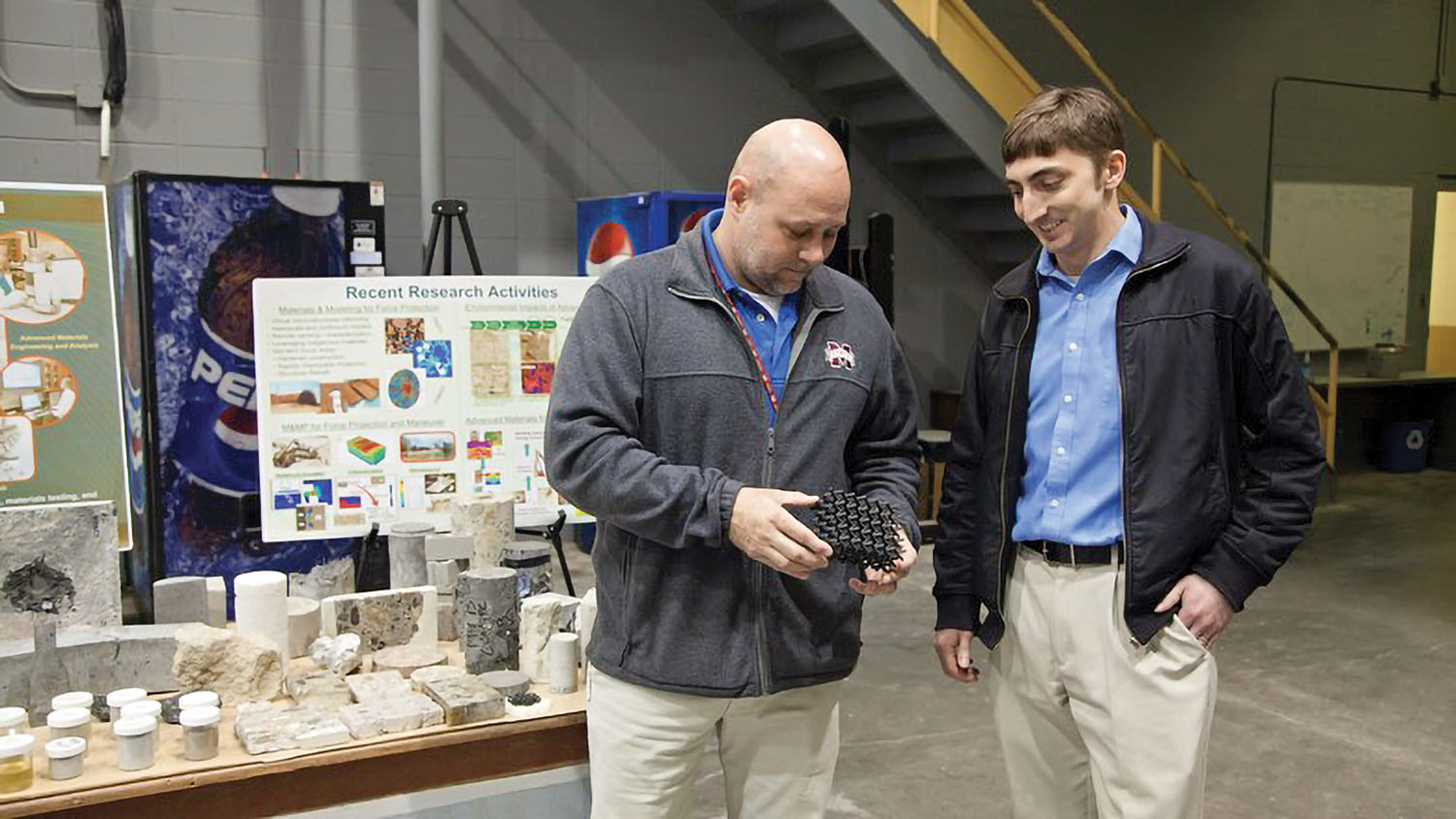When Pittsburgh Engineer District Civil Engineer Brian Lucarelli visited the U. S. Army Engineer Research and Development Center’s (ERDC) Vicksburg campus in spring of 2018, his goals were to observe his district’s testing project and explore the possibilities of participating in the center’s educational outreach program, ERDC University.
“My supervisor mentioned ERDC University as something that I should look into during my visit,” he said. “I decided to apply after talking to Mike Anderson, a fiscal year 2018 ERDC University participant, about his experience. I felt that I had the opportunity to merge ERDC’s knowledge base and Pittsburgh District’s Charleroi megaproject to gain insights that will benefit future navigation design projects.”
Now in its fourth year, ERDC-U partners Corps division and district participants with ERDC subject matter experts to apply and implement technical solutions during a six-month program. Sponsored by the ERDC Office of Research and Technology Transfer and the Directorate of Human Capital, the program’s spring kickoff week featured briefings and tours of four of the seven laboratories located throughout the 700-acre campus.
Chosen as one of six participants for the fiscal year 2019 session, Lucarelli is working with his mentor, Research Civil Engineer Monica Ramsey, and other researchers in Vicksburg’s Geotechnical and Structures Laboratory’s Concrete and Materials Branch.
While Lucarelli’s primary project involves incorporating numerical modeling and concrete simulation into the design process for civil works structures, he added that “these researchers have also involved me in their ongoing research projects involving Ultra High Performance Concrete. UHPC is a special type of concrete that is many times stronger than conventional concrete. I appreciate the opportunity to work with it in a laboratory setting and see what applications it might have for civil works.
“Historically, large civil works structures require certain specialty testing that only a limited number of laboratories can perform,” he said. “My goal is to develop a design process where the recent advances in numerical modeling of concrete can be incorporated to optimize the design and reduce the expenses of full-scale laboratory testing.”
Lucarelli received his bachelor’s in civil engineering from the University of Pittsburgh and bachelor’s in mathematics from Waynesburg University. After working for eight years with a private civil engineering firm in the nuclear energy sector, he joined the Pittsburgh District in August 2017.
“My job is to provide engineering support for the maintenance and rehabilitation projects in my District, especially for navigation locks. I am the project engineer for the Charleroi Lock Rehabilitation project, part of the Lower Monongahela River Megaproject. In that role I act as the point of contact between engineering and construction for review of transmittals and requests for information from the contractor, as well as addressing emergent issues during construction,” Lucarelli said.
Commenting on his initial experiences as an ERDC-U participant, Lucarelli said, “The two things I enjoyed most about kickoff week were taking the lab tours that allowed us to get a glimpse of the variety of types of research that ERDC performs, and talking to the other ERDC University participants about their projects.”
Caption for photo: Brian Lucarelli, right, a civil engineer in the Pittsburgh Engineer District, tours the Geotechnical and Structures Laboratory at the U.S. Army Engineer Research and Development Center in Vicksburg, Miss. At left is the lab’s Concrete and Material Branch Chief Christopher Moore, who is holding a sample of polylactic acid material, which is 3-D printed into a lattice structure to enhance structural performance and energy dispersion.




